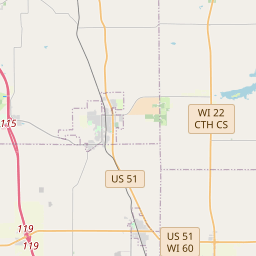Civilian Conservation Corps
Historical marker location:






Camp Devil's Lake
- March 31, 1933: President Franklin D. Roosevelt signs the Emergency Conservation Work (ECW) Act into law, establishing the Civilian Conservation Corps as part of his New Deal program.
- April 5, 1933: The CCC is officially launched, providing employment opportunities for unemployed young men between the ages of 18 and 25.
- 1933-1942: The CCC enrolls over 2.5 million young men from economically disadvantaged families, providing them with jobs, vocational training, and relief during the Great Depression.
Camp Life: CCC enrollees live in camps located in rural areas and work on various conservation projects across the United States. They receive food, shelter, clothing, and a small wage, with a portion of their earnings sent back home to support their families.
Conservation Projects: The CCC undertakes a wide range of conservation projects, including reforestation, erosion control, trail construction, forest fire prevention, wildlife conservation, historic site restoration, and the development of public parks.
Collaboration with Other Agencies: The CCC works in collaboration with various federal agencies, including the National Park Service, U.S. Forest Service, Bureau of Land Management, and Soil Conservation Service, to implement conservation programs and projects.
Educational and Vocational Training: In addition to their work, CCC enrollees receive educational and vocational training, such as literacy classes, courses in conservation and forestry, and technical skills development.
Military Training: During World War II, the CCC shifts its focus to providing military training for its enrollees, preparing them for military service.
- July 1, 1942: As the United States transitions into wartime efforts and the economy improves, the CCC gradually loses its significance. The program officially ends with the termination of new enrollments.
The Civilian Conservation Corps played a significant role during the Great Depression, providing employment, relief, and skills training to young men while accomplishing vital conservation work across the country. The program's legacy can still be seen today in the numerous parks, forests, and other public lands that were developed or improved through the efforts of CCC enrollees.
The University of Wisconsin-Madison is the oldest and largest public university in the state, and is often referred to as the "Harvard of the Midwest." It was founded in 1848, just two months after Wisconsin became a state.
European settlement in Sauk County began in the early 19th century when fur traders and explorers ventured into the area. One of the most significant figures in the county's history is Augustin Grignon, a fur trader, and early settler who established a trading post along the Wisconsin River in present-day Prairie du Sac. The establishment of this trading post marked the beginning of permanent European settlement in Sauk County.
In the mid-19th century, Sauk County experienced rapid growth and development. The construction of railroads in the 1850s facilitated trade and transportation, attracting more settlers to the area. The county quickly became an important agricultural center, with farmers cultivating crops like wheat, corn, and tobacco. The growth of the dairy industry also played a vital role in Sauk County's economy.
Sauk County is perhaps most famous for its association with renowned architect Frank Lloyd Wright. Born and raised in the nearby city of Richland Center, Wright spent a significant portion of his career designing and building homes and structures in the county. His influence can still be seen today in the distinctive architecture found throughout Sauk County.
Overall, Sauk County's history is a testament to the determination and hard work of its early settlers, the influence of Native American culture, and the lasting impact of figures like Augustin Grignon and Frank Lloyd Wright. Today, the county continues to thrive as a popular tourist destination and a vibrant community rooted in its past.
Sauk County Timeline
This timeline provides a glimpse into the major events and milestones that have shaped the history of Sauk County, Wisconsin.
- 1836: The Wisconsin Territory is established, including the area that is now Sauk County.
- 1840: Sauk County is officially organized with the initial settlements of Baraboo and Prairie du Sac.
- 1850s: The construction of railroads in Sauk County leads to increased transportation and economic growth.
- 1860s: Baraboo becomes a major center for circus performances, with several circus companies based in the area.
- 1875: The Al. Ringling Theatre, now a historic landmark, is built in Baraboo.
- 1930s: The Great Depression affects Sauk County, leading to economic challenges for the local communities.
- 1940s: The construction of the Badger Army Ammunition Plant in Baraboo brings employment opportunities during World War II.
- 1950s-1960s: Tourism becomes an important industry in Sauk County, with the development of attractions such as the Wisconsin Dells.
- 1970s: Efforts to preserve the natural beauty and environmentally sensitive areas of Sauk County begin, leading to the creation of conservation areas and parks.
- 1990s-2000s: Sauk County experiences population growth and economic development, while still maintaining its rural character.